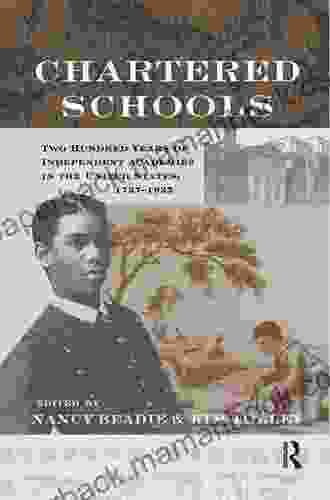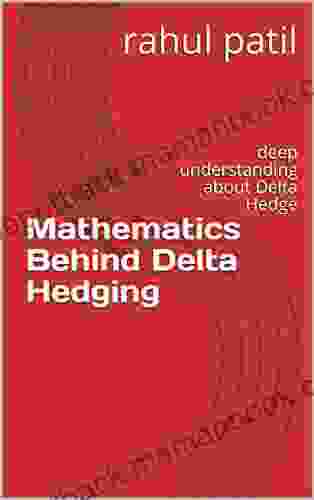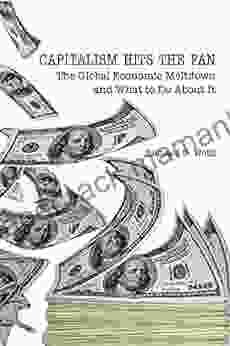Two Hundred Years of Independent Academies in the United States, 1727-1925

The Early Years
The first independent academy in the United States was Franklin Academy, founded in Philadelphia in 1727. This school was followed by a number of others, including the Academy and College of Philadelphia (1749),the College of New Jersey (1746),and King's College (1754). These schools were founded by a variety of groups, including religious denominations, charitable organizations, and private individuals.
4.2 out of 5
| Language | : | English |
| File size | : | 2690 KB |
| Text-to-Speech | : | Enabled |
| Screen Reader | : | Supported |
| Enhanced typesetting | : | Enabled |
| Word Wise | : | Enabled |
| Print length | : | 556 pages |
The early independent academies played an important role in the education of the nation's elite. Many of their graduates went on to become leaders in government, business, and the arts. For example, John Adams, Benjamin Franklin, and Thomas Jefferson all attended independent academies.
The curriculum of the early independent academies was typically a mix of classical and modern subjects. Students studied Latin, Greek, mathematics, science, history, and literature. The schools also placed a strong emphasis on character development, and many of them had strict rules governing student conduct.
The Rise of Public High Schools
In the late 19th and early 20th centuries, the rise of public high schools led to a decline in the number of independent academies. However, many of these schools continued to operate, and they continue to play an important role in American education today.
There are a number of reasons why independent academies remain popular with families. First, these schools offer smaller class sizes than public schools. This allows teachers to give students more individualized attention. Second, independent academies typically have a more challenging curriculum than public schools. This prepares students for college and beyond. Third, independent academies place a strong emphasis on character development. This helps students to become responsible citizens.
The Future of Independent Academies
Independent academies are facing a number of challenges in the 21st century. One challenge is the rising cost of tuition. Another challenge is the increasing diversity of the student population. Independent academies need to find ways to make their schools more affordable and accessible to students from all backgrounds.
Despite these challenges, independent academies are likely to continue to play an important role in American education. These schools offer a number of advantages over public schools, and they remain popular with families who are seeking a high-quality education for their children.
Independent academies have a long and distinguished history in the United States. These schools have played a major role in the education of the nation's elite, and many of their graduates have gone on to become leaders in government, business, and the arts. Independent academies continue to offer a number of advantages over public schools, and they remain popular with families who are seeking a high-quality education for their children.
4.2 out of 5
| Language | : | English |
| File size | : | 2690 KB |
| Text-to-Speech | : | Enabled |
| Screen Reader | : | Supported |
| Enhanced typesetting | : | Enabled |
| Word Wise | : | Enabled |
| Print length | : | 556 pages |
Do you want to contribute by writing guest posts on this blog?
Please contact us and send us a resume of previous articles that you have written.
 Top Book
Top Book Novel
Novel Fiction
Fiction Nonfiction
Nonfiction Literature
Literature Paperback
Paperback Hardcover
Hardcover E-book
E-book Audiobook
Audiobook Bestseller
Bestseller Classic
Classic Mystery
Mystery Thriller
Thriller Romance
Romance Fantasy
Fantasy Science Fiction
Science Fiction Biography
Biography Memoir
Memoir Autobiography
Autobiography Poetry
Poetry Drama
Drama Historical Fiction
Historical Fiction Self-help
Self-help Young Adult
Young Adult Childrens Books
Childrens Books Graphic Novel
Graphic Novel Anthology
Anthology Series
Series Encyclopedia
Encyclopedia Reference
Reference Guidebook
Guidebook Textbook
Textbook Workbook
Workbook Journal
Journal Diary
Diary Manuscript
Manuscript Folio
Folio Pulp Fiction
Pulp Fiction Short Stories
Short Stories Fairy Tales
Fairy Tales Fables
Fables Mythology
Mythology Philosophy
Philosophy Religion
Religion Spirituality
Spirituality Essays
Essays Critique
Critique Commentary
Commentary Glossary
Glossary Bibliography
Bibliography Index
Index Table of Contents
Table of Contents Preface
Preface Introduction
Introduction Foreword
Foreword Afterword
Afterword Appendices
Appendices Annotations
Annotations Footnotes
Footnotes Epilogue
Epilogue Prologue
Prologue Robert Schwarztrauber
Robert Schwarztrauber Patricia Lee
Patricia Lee Scott Sigler
Scott Sigler Lee Conrad
Lee Conrad Heather Gudenkauf
Heather Gudenkauf Arx Reads
Arx Reads Charles Wing
Charles Wing Peter Zeihan
Peter Zeihan Erik E Hanberg
Erik E Hanberg Hilaire Belloc
Hilaire Belloc Georg F L Bausch
Georg F L Bausch Mark Simmons
Mark Simmons Matti Charlton
Matti Charlton Eric Chou
Eric Chou H P Gentileschi
H P Gentileschi Lia Hunt
Lia Hunt T K Oliver
T K Oliver Salvatore Stefanelli
Salvatore Stefanelli Costas Lapavitsas
Costas Lapavitsas Kim Pearson
Kim Pearson
Light bulbAdvertise smarter! Our strategic ad space ensures maximum exposure. Reserve your spot today!

 Charles DickensHaiku of Days: A Poetic Journey for Spiritual Seekers, Dreamers, and Lovers...
Charles DickensHaiku of Days: A Poetic Journey for Spiritual Seekers, Dreamers, and Lovers...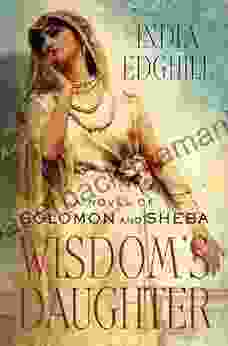
 Ian MitchellThe Epic Tale of Solomon and Sheba: A Journey of Love, Politics, and Divine...
Ian MitchellThe Epic Tale of Solomon and Sheba: A Journey of Love, Politics, and Divine...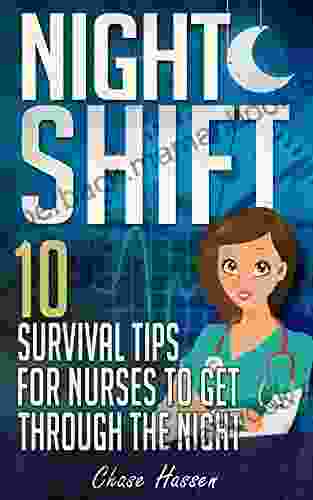
 Billy Foster10 Survival Tips for Nurses to Get Through the Night as a Licensed Practical...
Billy Foster10 Survival Tips for Nurses to Get Through the Night as a Licensed Practical... Tony CarterFollow ·12.4k
Tony CarterFollow ·12.4k Alan TurnerFollow ·18.1k
Alan TurnerFollow ·18.1k Roland HayesFollow ·15.3k
Roland HayesFollow ·15.3k Jay SimmonsFollow ·13.1k
Jay SimmonsFollow ·13.1k David Foster WallaceFollow ·5k
David Foster WallaceFollow ·5k Desmond FosterFollow ·8.4k
Desmond FosterFollow ·8.4k Dean CoxFollow ·2.8k
Dean CoxFollow ·2.8k Anthony WellsFollow ·4.5k
Anthony WellsFollow ·4.5k

 Jeremy Mitchell
Jeremy MitchellPlay We Now On Christmas Violin Christmas: A Heartfelt...
Play We Now On...
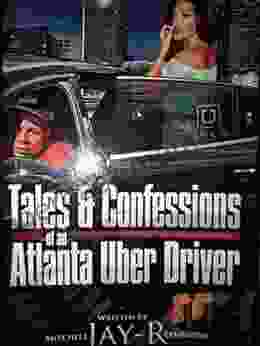
 Terry Bell
Terry BellTales from the Road: Confessions of an Atlanta Uber...
In the vibrant...
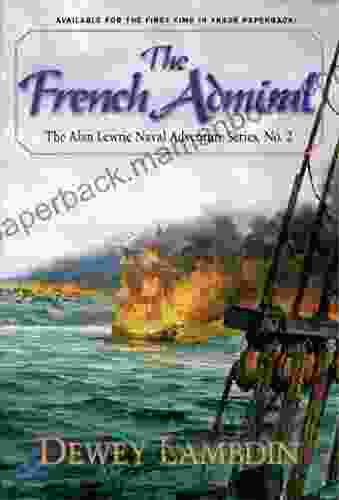
 Ervin Bell
Ervin BellThe French Admiral: A Gripping Naval Adventure with Alan...
In the vast expanse of...

 Henry David Thoreau
Henry David ThoreauCrochet Cozy Afghan Patterns: Crochet Weekend Afghan...
to Crochet...
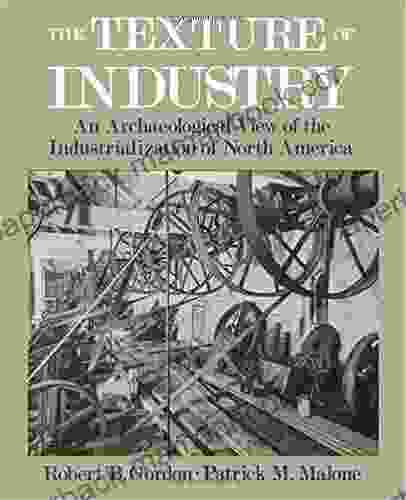
 Orson Scott Card
Orson Scott CardAn Archaeological View Of The Industrialization Of North...
The industrialization of North America was a...

 Josh Carter
Josh CarterClipboard Christmas Skits by Tom Spence: A Festive...
A Christmas...
4.2 out of 5
| Language | : | English |
| File size | : | 2690 KB |
| Text-to-Speech | : | Enabled |
| Screen Reader | : | Supported |
| Enhanced typesetting | : | Enabled |
| Word Wise | : | Enabled |
| Print length | : | 556 pages |


